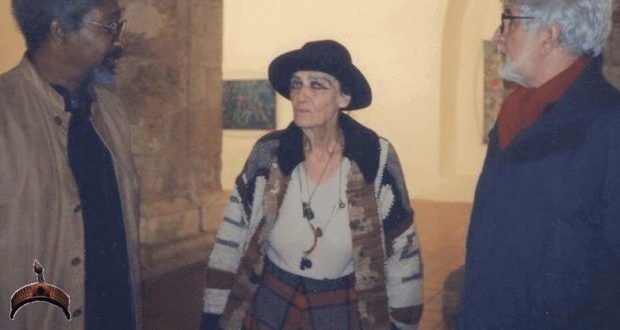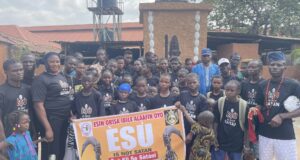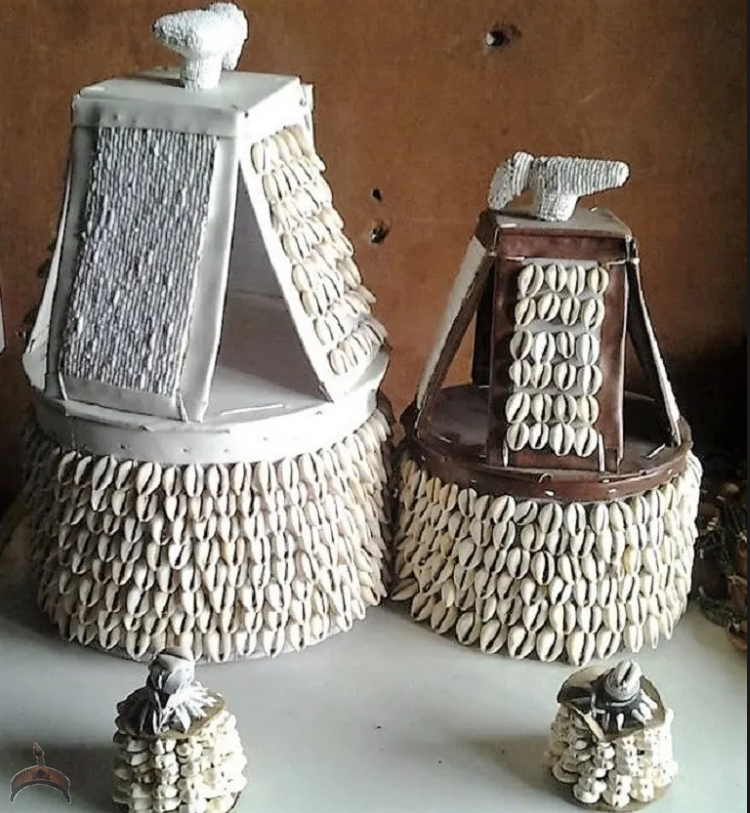Coming To Africa And Devoting Her Life To The Deities
In 1949, she came down to Africa with her then-husband, Ulli Beier. In 1950, they moved to Ede, now in Osun State to have a change from the ‘unnatural’ compound of the university. They wanted a more natural surrounding. While he continued as a lecturer at the University of Ibadan, she proceeded as an artist. It was at Ede that she met the powerful Ajagemo, one of the very last priests of Obatala worship, an ancient orisha-based religion which had almost gone extinct. Then she became friends with him and took great interest in all the rituals and activities even though she understood not even a single word of Yoruba at that time. She said to a French documentary maker in 2005:“He took me by the hand and led me into the spirit world.. “I did not speak Yoruba and he did not speak English. Our only intercourse was the language of the trees.’
They later moved to Osogbo but over time, she and Beier would separate. While he left for Europe, she remained in Osogbo and while Beier was training a group of local artists (he also founded the Mbari Mbayo Cultural Movement which has been described as the precursor of modern Nigerian art and literature), Susanne got even deeper in her training as a priestess of an ancient religion. The real turning point came in 1950 when she was seriously ill with tuberculosis. As at that time, Nigeria was under British colonialism and there was no doctor on ground to help her from the disease that was slowly killing her from the inside. After various attempts to cure her tuberculosis, they gave up on her and expected her to die until help came from an unlikely source: from the Yorubas.
She was given herbal mixtures provided by Yoruba medicinemen and in no time, she was well. She recovered and decided to ‘give her life’ to the Yoruba orishas who saved her from the gripping jaws of death. And until she died, she never looked back. The only time she visited her country was for short visits, her real home was in the heart of southwestern Nigeria, surrounded by warm and hospitable Yorubas.
Susanne The Writer, Artist And Environmentalist
While in Yorubaland, she also displayed her artistic skills, making countless murals and a series of sculptures and carvings. She took her time to understand the deepest mysteries of Yoruba traditional beliefs and tried to interpret them through art (see pictures below). From the mid-80s, her works were exhibited in Europe with the premiere in 1985 when she turned 70. That same year, she took her art to Vienna, Austria for the first time in 30 years. As an artist, she distinguished herself, making use of various media, such as oil painting on plywood panels from old tea chests.
It is important to mention that she was one of the most influential Austrian artists, with some of those inspired by her being an entire generation of Vienne artists like Bertoni, Brauer, Lehmden and Fuchs. Some of the themes of her artworks spanned various areas: global literature, Yoruba mythology, Christianity, history of man, nature and the rest. She described her artistic representations like cloth paintings (see picture below) of Yoruba mythologies as representing ‘a sort of metaphysical snapshot.’ An ingenious artist, she later created a method which fused wax batik, textile painting and indigo dye. With this style, she was able to make paintings of immense proportions, some measuring up to 7 by 3.5 metres.
In the period between 1952 and 1970, she made illustrations for and designed Yoruba books. She also wrote children books in Yoruba and English and was a regular contributor to the popular Black Orpheus founded by her then-husband, Ulli Beier. In addition to this, she also ensured that the pristine rainforest was preserved. She had to cross paths with loggers and farmers who wanted to cut down the trees for other uses and destroy the environment in the process. Over her over fifty years of living among the Yorubas, she also teamed up with the locals to restore numerous shrines, many of which were already falling into disuse and lack of repairs before she came.
Love, Romance And Marriage
Continue Reading After The Page Break
 Ọmọ Oòduà Naija Gist | News From Nigeria | Entertainment gist Nigeria|Networking|News.. Visit for Nigeria breaking news , Nigerian Movies , Naija music , Jobs In Nigeria , Naija News , Nollywood, Gist and more
Ọmọ Oòduà Naija Gist | News From Nigeria | Entertainment gist Nigeria|Networking|News.. Visit for Nigeria breaking news , Nigerian Movies , Naija music , Jobs In Nigeria , Naija News , Nollywood, Gist and more









